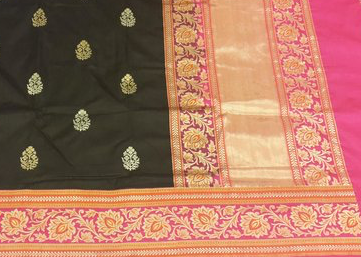The luxurious banarasi sarees are woven in the city of Varanasi, a holy city located on the banks of the river Ganges in the north Indian state of Uttar Pradesh. Also called Banaras or Benaras, Varanasi is considered to be the spiritual capital of India. This rich spiritual and cultural heritage is often seen reflected in the elaborate design and rich weave of these magnificent sarees.
A walk through the bye lanes of the city provides a fascinating glimpse into how Banarasi sarees are made. In an era where most things are machine made in huge, impersonal factories, these sarees are still lovingly woven by hand, which adds immensely to their allure.
Characteristic features of Banarasi sarees
Although every saree that has its own distinctive combinations of colors, motifs and designs, there are a few features that are common in all of most sarees produced in this region.
Each saree is made from finely woven silk and is elaborately decorated with traditional designs and embroidery. These designs are usually done using a special kind of gold or silver thread called zari. These threads can be quite heavy and the ultimate weight of the saree depends on how much zari has been used to create the design. The use of zari is one of the specialties of Banarasi sarees.
Unlike many other types of sarees from India, Banarasi sarees have a more compact weave, which also adds to the weight of the saree.
The designs are typically Mughal inspired with delicate foliage and floral motifs intricately intertwined together. Another Mughal inspired design that is often seen in sarees from this region is a string of upright leaves woven at the outer edge of the border. Very often, there will be numerous visual effects woven right through the length of the saree.
The pallu or the part of the saree that is draped over the shoulder is very elaborated embroidered and is often the highlight of these sarees.
Because of the compact weave and elaborate design work, it can sometimes take up to 6 months to create one length of a saree.
Types of Banarasi Sarees
Banarasi sarees can be categorized by the material used as well as by the designs they feature. Depending on the material used, there are four varieties of Banarasi silk saree: Katan, Georgette, Organza and Shatter. Depending on the design, they can be categorized as Jangla, Tanchoi, Butidar, Tissue, Vaskat and Cutwork.
Today, the weavers have become more flexible with their weaving styles and patterns in keeping with the market trends. Interestingly however, they have managed to merge the fusion elements seamlessly with their traditional weaves to ensure that today’s sarees do not deviate too far from their incredibly rich heritage.


